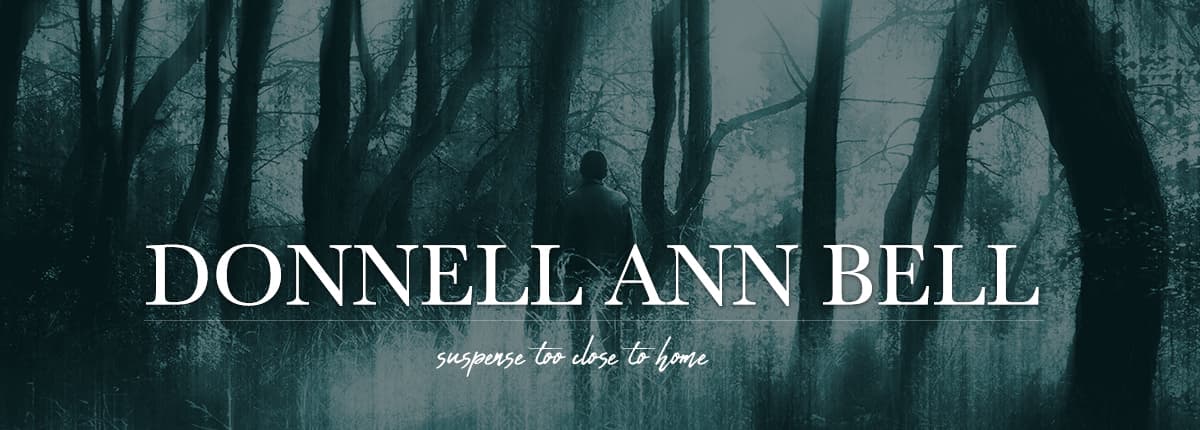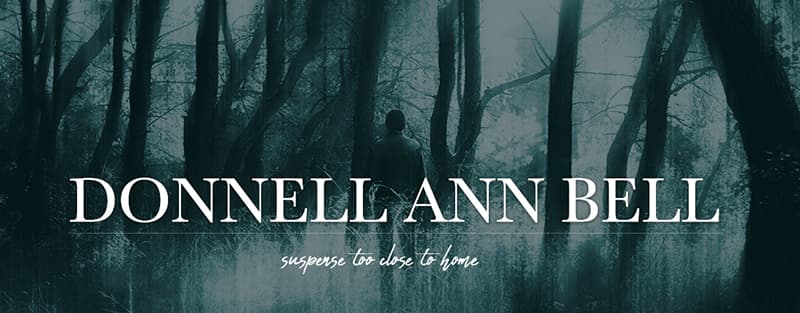
Readers: I can’t tell you how excited I am to promote First Cut. It’s such a fantastic thriller. Moreover, the actor who performed on Audible is amazing. Her voice, the character distinctions, the plot, this story has come alive for me… exceptionally high praise, given the subject material about a medical examiner. Whether you’re reading or listening, you’re in for a treat. Please welcome Dr. Judy Melinek and Mr. T. J. Mitchell to Help From My Friends Friday.
By: Judy Melinek, M.D. and T.J. Mitchell
When people find out that we are a married couple who collaborate to write detective fiction, they inevitably ask how we can invent murders without committing any upon one another.
detective fiction, they inevitably ask how we can invent murders without committing any upon one another.
The answer is simple: We have no overlapping skill set. Judy has the stories and the imagination to play around with them, and T.J. is one of those people who is happiest when he is alone at a keyboard, wrangling words and structuring a story.
Here’s another thing. Before we became published authors, we had already collaborated as parents to four kids—and working together to mold fictional people is a breeze compared to the challenges of working together to raise fleshy ones.
Judy is a doctor, the family breadwinner, and T.J. is the domestic engineer. She is a forensic pathologist, which means she performs autopsies for a living, and he spent twelve years as a full-time stay-at-home-dad before we got our first book contract, for the memoir Working Stiff: Two Years, 262 Bodies, and the Making of a Medical Examiner. Judy had come up with the idea for a nonfiction book about forensic training. She had taken notes daily during her two-year forensic pathology fellowship at the New York City Office of Chief Medical Examiner, which she then rearranged out of chronological order and into a case-based structure. Together we then assembled a detailed outline and a couple of sample chapters, and managed to sign with a literary agent, the brilliant Jessica Papin of Dystel, Goderich, and Bourret. Jessica landed us a book contract with a Big-Five publisher—and we celebrated…!
Until it occurred to T.J. that he was a writer who had never written a book. He didn’t know how to write a book, nor how long it would take. Yet we had just signed a fat contract with professional people wearing business suits in towers in Manhattan, and they had already paid us.
Sometimes a little panic can be cleansing. It certainly triggered a radical change for our children. Home from school they would come to find T.J. mashing desperately at the laptop on the kitchen table. “Peanut butter,” he would mutter with a wave in the direction of the cabinet, “crackers, milk. Daddy working.”
It took us about two years, but we got Working Stiff done. T.J. would write and rewrite section by section, and then email a chunk or a chapter to Judy, to vet and adjust for accuracy to the science and her lived experience. That method worked smoothly. The book was released in 2014, became a New York Times bestseller, and is today used as a textbook in forensics classes across the country and internationally.
Judy had always been an avid fan of detective novels, and thought it would be fun to write one—one that utilized scrupulously accurate forensic science, drawn from her professional experience. We were living in San Francisco and she was working in the county morgue there, a rich mine for material about messy deaths, hidden homicides, and poisonous office politics. She came up with the seed idea for First Cut: a Novel, and together we hashed out a treatment—a summary short story. From there, we did the hardest work, spending months developing the outline, a humongous and comprehensive blueprint of the entire book, sometimes with dialogue. Along the way we generated a bunch of auxiliary documents—a structural outline, a timeline, a character list. These are typical enough for any novelist. Less typical is our document Dead Bodies Timeline, which we need because our heroine, Dr. Jessie Teska, is a San Francisco medical examiner, and our books are chock full of dead bodies. Some are movers of the plot, some are incidental, and some are red herrings. Gotta keep em straight!
Once we had filled all the gaps in the master outline, T.J. printed it, sat down at the computer keyboard with a red pen, and started writing the book’s rough draft. He would cross out each line or section of the outline with a slash of the pen as soon as he had finished that section and committed it to pixels in the word-processed draft. When he reached the bottom of each outline page, he shredded it. This proved an immensely satisfying and spiritually useful ritual. When the shredder reached capacity, we would bring the basket home and dump it in the cage where our family bunny, Blaze, sleeps. Blaze would then soil the shreds of our outline, completing its transformation from the scaffold of a story into a fluffy pile of obsolescence.
Every few days during this process of drafting, T.J. would bring First Cut to Judy and ask her to read the new material out loud, usually while he was cooking dinner. While reading, Judy might raise objections (often scientific, or having to do with the way T.J. tends to write cop dialogue), and T.J. would fix these, and also adjust the rhythm and flow of the written word. By the time the manuscript was finished and headed to the editor, T.J. had typed it all, and Judy had narrated it back.
Now Hanover Square Press has brought First Cut to bookshelves, glow screens, and audio devices, and we are working on the sequel, Cross Cut, for a January 2021 launch. At a time when most parents are preparing for an empty nest, we find ourselves working on a new baby. It’s a joy: We love watching our Jessie play with her imaginary friends, and we know how immensely lucky we are to be able to practice a craft together in this way. There’s no mystery to it.
First Cut Excerpt:
PROLOGUE
Los Angeles
May
The dead woman on my table had pale blue eyes, long lashes, no mascara. She wore a thin rim of black liner on her lower lids but none on the upper. I inserted the twelve gauge needle just far enough that I could see its beveled tip through the pupil, then pulled the syringe plunger to aspirate a sample of vitreous fluid. That was the first intrusion I made on her corpse during Mary Catherine Walsh’s perfectly ordinary autopsy.
The external examination had been unremarkable. The decedent appeared to be in her mid-thirties, blond hair with dun roots, five foot four, 144 pounds. After checking her over and noting identifying marks (monochromatic professional tattoo of a Celtic knot on lower left flank, appendectomy scar on abdomen, well-healed stellate scar on right knee), I picked up a scalpel and sliced from each shoulder to the breastbone, and then all the way down her belly. I peeled back the layers of skin and fat on her torso—an ordinary amount, maybe a little on the chubby side—and opened the woman’s chest like a book.
I had made similar Y-incisions on 256 other bodies during my ten months as a forensic pathologist at the Los Angeles County Medical Examiner-Coroner’s Office, and this one was easy. No sign of trauma. Normal liver. Healthy lungs. There was nothing wrong with her heart. The only significant finding was the white, granular material of the gastric contents. In her stomach was a mass of semi-digested pills.
When I opened her uterus, I found she’d been pregnant. I measured the fetus’s foot length and estimated its age at twelve weeks. The fetus appeared to have been viable. It was too young to determine sex.
I deposited the organs one by one at the end of the stainless-steel table. I had just cut into her scalp to start on the skull when Matt, the forensic investigator who had collected the body the day before, came in.
“Clean scene,” he reported, depositing the paperwork on my station. “Suicide.”
I asked him where he was going for lunch. Yogurt and a damn salad at his desk, he told me: bad cholesterol and a worried wife. I extended my condolences as he headed back out of the autopsy suite.
I scanned through Matt’s handwriting on the intake sheet and learned that the body had been found, stiff and cold, in a locked and secure room at the Los Angeles Omni hotel. The cleaning staff called the police. The ID came from the name on the credit card used to pay for the room, and was confirmed by fingerprint comparison with her driver’s license thumbprint. A handwritten note lay on the bed stand, a pill bottle in the trash. Nothing else. Matt was right: There was no mystery to the way Mary Walsh had died.
I hit the Dictaphone’s toe trigger and pointed my mouth toward the microphone dangling over the table. “The body is identified by a Los Angeles County Medical Examiner’s tag attached to the right great toe, inscribed LACD-03226, Walsh, Mary Catherine…”
I broke the seal on the plastic evidence bag and pulled out the pill bottle. It was labeled OxyContin, a powerful painkiller, and it was empty.
“Accompanying the body is a sealed plastic bag with an empty prescription medication bottle. The name on the prescription label…”
I read the name but didn’t speak it. The hair started standing up on my neck. I looked down at my morning’s work—the splayed body, flecked with gore, the dissected womb tossed on a heap of other organs.
That can’t be, I told myself. It can’t.
On the clipboard underneath the case intake sheet I found a piece of hotel stationery sealed in another evidence bag. It was the suicide note, written in blue ink with a steady feminine hand. I skimmed it—then stopped, and went back.
I read it again.
I heard the clipboard land at my feet. I gripped the raised lip of my autopsy table. I held tight while the floor fell away.
 Judy Melinek, M.D. and T.J. Mitchell are the New York Times bestselling co-authors of the memoir Working Stiff: Two Years, 262 Bodies, and the Making of a Medical Examiner (Scribner, 2014). Dr. Melinek was an assistant medical examiner in San Francisco for nine years, and today works as a forensic pathologist and medico-legal consultant. T.J. Mitchell, her husband, is a writer with an English degree from Harvard, and worked in the film industry before becoming a stay-at-home dad and novelist. First Cut (Hanover Square Press) is their debut novel, launching a forensic-noir detective series.
Judy Melinek, M.D. and T.J. Mitchell are the New York Times bestselling co-authors of the memoir Working Stiff: Two Years, 262 Bodies, and the Making of a Medical Examiner (Scribner, 2014). Dr. Melinek was an assistant medical examiner in San Francisco for nine years, and today works as a forensic pathologist and medico-legal consultant. T.J. Mitchell, her husband, is a writer with an English degree from Harvard, and worked in the film industry before becoming a stay-at-home dad and novelist. First Cut (Hanover Square Press) is their debut novel, launching a forensic-noir detective series.











Hi, Judy, TJ and Donnell: My book club read Working Stiff and could not stop talking about it. Friends asked for book recommendations and many of us said yours. Congratulations on your new thriller.
First Cut is a superb read. I first learned about the novel from crimescenewriters.org, where I’d been exposed to the depth of Judy’s knowledge. TJ’s expertise is evident in the story, too. I haven’t finished the story yet, but I find myself smiling while I read because I’m so impressed. Keep it up, team!
Thank you, Vicki! If your book club reads First Cut, we’ll be happy to Skype in to talk to the group. We love book club talks, because we can unleash all the spoilers! Email roxanne.jones@harpercollins.com and tell her I sent you.
Thanks, Chris! After you’re done (and I think you’ll be pleased with the rest!), would you kindly post a star rating and/or review to Goodreads, Amazon, or wherever else you go for book reviews. Those ratings are extremely important for spreading the word about a debut novel like ours.
Thanks, Vicki! We’re very proud of Working Stiff. We’re also very proud of First Cut, and if your book club chooses to read it, we’ll be happy to Skype in to talk to the group about it. We love talking to book clubs, because we get to unleash all the spoilers! Email our publicist Roxanne Jones (roxanne.jones@harpercollins.com) and tell her I sent you.
OMG! I’ve been continually impressed with what Judy brings to the table at CSW, but this post almost got me to stop and head over to Amazon. Love the humor! But I was TOTALLY sold before I finished the second paragraph in your excerpt. I quit reading. Want it all brand-spanking new. Well done, you two! And Donnell, thanks for shepherding me over here. xoxo
Peg, trust me, this book is right up yours and my alley! I have both the digital and the Audible copies. Well worth it. Thanks for stopping by!
Thanks so much, Peg! I don’t think I’ve ever had anyone praise our writing by saying she just had to stop reading it to run out and get more! While you’re getting your hands on First Cut, you might as well grab our first book, the memoir Working Stiff: Two Years, 262 Bodies, and the Making of a Medical Examiner, too!